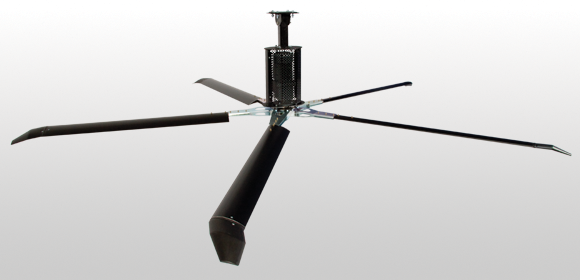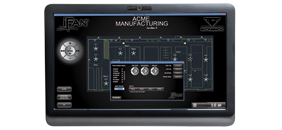High Volume Low Speed Fans
|
HVLS Fan
Designed to create a more comfortable environment using the least amount of energy. | HVLS Fan Control
Allows you to network multiple HVLS fans and control them from a centralized location |
HVLS Fan features an advanced blade profile which means more lift while the five (5) blade design results in less stress to your building. The combination of these engineering discoveries equates to an increase in airflow without increasing energy usage.- Keep employees cool and comfortable. The 2-3 mph breeze delivers the equivalent of a 7-11 degree reduction in the perceived temperature.
- Reduce energy consumption. Working with the HVAC system, HVLS large fans help regulate temperature from ceiling to floor, which can allow a facility to raise its thermostat setting 3-5 degrees creating the potential for up to a 4% energy savings per degree change.
- Protect product integrity. Air circulation helps keep food and produce dry and fresh reducing spoilage. Balanced circulation reduces stagnant air, hot and cold spots and condensation. HVLS fans are also designed to operate in reverse, which helps de-stratify air in cool season operation.
- Improve working conditions. Floor condensation is minimized, keeping floors drier and safer for foot and motorized traffic. Improved indoor air quality through the dispersing of fumes. Fans can be operated from a centralized location using network controls (sold separately), allowing a facility to easily monitor fan activity and performance .
- Contribute to LEED certification in various categories. Energy and Atmosphere, Indoor Environmental Quality, Innovation and Design.
|
HOW HVLS FANS WORK
The fan’s airfoil style blade design produces a massive, cylindrical column of air that flows down to the floor and outward in all directions, creating a horizontal floor jet that consistently circulates air in large spaces. This “horizontal floor jet” pushes air a greater distance before it is pulled back vertically toward the blades. The greater the down flow, the greater the air circulation and resulting benefits. In the colder months, fans can be run in reverse to circulate the hot air trapped at ceiling level known as “destratification”. |